If you're wondering about pronunciation, you say Mechelen like Meh-kelh-in. That probably doesn't help cause you still gotta sound like you're hacking up stuff while saying it, but still, it's Belgian. Yup!
ANYWAY! I ventured over to Mechelen the other day with some ladies from base to check out some old school tapestries from a company called "De Wit".
The Royal Manufacturers De Wit was founded in 1889. Yvan Maes De Wit, its present director, represents the fourth generation of tapestry restorers and dealers of fine antique tapestries. They clean, conserve and restore tapestries. They're todays leading restorer of tapestries in the world for museums and one of the leading restorers for private customers. Plus, they're also an important international dealer, specializing in the sale and purchase of fine antique tapestries and is present at international Fairs.The Royal Manufacturers is established in a historic building, the Refuge of Tongerlo Abbey in Mechelen, founded in 1484. It organizes guided tours of its buildings, its exhibition rooms and its laboratories for the intention of individual visitors or groups.
The building itself was very cool. I mean, you could CLEARY see it was older, but I didn't realize it was from the late 1400's.
The main door to get into the courtyard had this beautiful ironwork on it, then when you looked at the back of it (once you were inside), you could see the large locking mechanism they used to open the entire door rather than just the mini door.
The main door to get into the courtyard had this beautiful ironwork on it, then when you looked at the back of it (once you were inside), you could see the large locking mechanism they used to open the entire door rather than just the mini door.
The gal who gave the tour was amazing! Seriously, that was the best 10 euro I've ever spent. The tour lasted about two hours and learned all sorts of interesting facts about tapestries dating back to the 1300's to present time.I mean, the entire process was absolutely mind boggling as to what it takes to make a tapestry. The only downfall was that no pictures were allowed, which made me very very sad. I can describe things till I'm blue in the face, but actually seeing it is an entirely different story. ALTHOUGH, I managed to take a picture of a tapestry before we were told "no pictures". I popped onto their website and they have a slew of pictures of all the tapestries we checked out, so, I'm "acquiring" those pics and posting them on here so you can get an idea of what we saw :) Go me! *If you click on the picture, another window should pop up to allow you to view a larger version *
Here's the pic I took:
This is the same room where I took my picture. There was a variety of different tapestries in there dating from the 1400's to the 1700's. It was very interesting since our tour guide was pointing out the different ways you figure out how old a piece is by a symbol that was weaved into the border, the makers initials, or any sort of record keeping that was kept on that particular piece. Also, if the piece has absolutely no border, that means it's an older tapestry since they didn't start using elaborate borders till later.
*photo from De Wit website*
*photo from De Wit website*
This loom was AMAZING! You could definitely see it's an oldie goldie and shows signs of wear. I really REALLY wish I could've gotten a picture of it from where the tapestry work sits. You can see hundreds and hundreds of threads that they use to weave the tapestry pattern in & out of. Then, there's a layer underneath that has a the tapestries design on it that they use as a stencil..the crazy part? The entire piece is done BACKWARDS! Our guide had one of the workers come in and do a demonstration for us..it was insane how fast this gal was working on it! From what she was telling us, with a days worth of work, a section of the tapestry done that's the size of your hand. YOUR HAND. A full eight hour day. That's a lot of work for a small amount of space! Not only that, but they ONLY work with natural light..never at night since it throws off the colors of the thread they're using.
I asked the guide about whether you needed to have previous experience working with tapestries to work for De Wit, and amazingly enough, she said no! When they hire someone, they don't have to have any experience because it's all taught on the job. The main thing they're concerned about is the "investment" they make when they hire the individual...this isn't the type of job where you work there for a year or two, then bounce. This is a fine craft they teach that's passed down and they want the person to pretty much stay with the company as long as possible. I mean, you have someone supervising you for THREE YEARS till you're allowed to work on a piece by yourself. That's some serious business! I think one of the coolest things I hear was, when one of the tapestry workers develops back problems, arthritis or anything else..they try to adjust accordingly to keep the person employed with the company. How cool is that?
Here's the pic I took:
This is the same room where I took my picture. There was a variety of different tapestries in there dating from the 1400's to the 1700's. It was very interesting since our tour guide was pointing out the different ways you figure out how old a piece is by a symbol that was weaved into the border, the makers initials, or any sort of record keeping that was kept on that particular piece. Also, if the piece has absolutely no border, that means it's an older tapestry since they didn't start using elaborate borders till later.
*photo from De Wit website*
*photo from De Wit website*
This loom was AMAZING! You could definitely see it's an oldie goldie and shows signs of wear. I really REALLY wish I could've gotten a picture of it from where the tapestry work sits. You can see hundreds and hundreds of threads that they use to weave the tapestry pattern in & out of. Then, there's a layer underneath that has a the tapestries design on it that they use as a stencil..the crazy part? The entire piece is done BACKWARDS! Our guide had one of the workers come in and do a demonstration for us..it was insane how fast this gal was working on it! From what she was telling us, with a days worth of work, a section of the tapestry done that's the size of your hand. YOUR HAND. A full eight hour day. That's a lot of work for a small amount of space! Not only that, but they ONLY work with natural light..never at night since it throws off the colors of the thread they're using.
I asked the guide about whether you needed to have previous experience working with tapestries to work for De Wit, and amazingly enough, she said no! When they hire someone, they don't have to have any experience because it's all taught on the job. The main thing they're concerned about is the "investment" they make when they hire the individual...this isn't the type of job where you work there for a year or two, then bounce. This is a fine craft they teach that's passed down and they want the person to pretty much stay with the company as long as possible. I mean, you have someone supervising you for THREE YEARS till you're allowed to work on a piece by yourself. That's some serious business! I think one of the coolest things I hear was, when one of the tapestry workers develops back problems, arthritis or anything else..they try to adjust accordingly to keep the person employed with the company. How cool is that?
*photo from De Wit website*
*photo from De Wit website*
The tapestries in this room were absolutely AMAZING. I mean, the room was ridiculously huge.
The tapestries in this room were absolutely AMAZING. I mean, the room was ridiculously huge.
*photo from De Wit website*
Our guide ended up taking us upstairs to check out the room where the workers assess and restore older tapestries.
Our guide ended up taking us upstairs to check out the room where the workers assess and restore older tapestries.
*photo from De Wit website*
The wall pictured behind the workers is amazing. All the different shades of thread were really cool! The funny part is..it's mainly there for decoration. There's a whole other section of categorized thread in drawers where the workers get their colors from.
The wall pictured behind the workers is amazing. All the different shades of thread were really cool! The funny part is..it's mainly there for decoration. There's a whole other section of categorized thread in drawers where the workers get their colors from.
Overall, the tour was awesome. VERY VERY educational and by far the best tour I've been on in a long time.
From there, we walked on over to Saint Rumbold's Cathedral since the two gals I was with wanted to check it out in addition to Saint Rumbold's Tower.
From there, we walked on over to Saint Rumbold's Cathedral since the two gals I was with wanted to check it out in addition to Saint Rumbold's Tower.
I've actually seen the tower from afar on a few occasions, mainly when I've ridden the train back and forth to Antwerp. Tell ya what, when you're riding by, it's VERY striking..even from a distance. When we actually got to it, I just kept staring at the architecture because it was absolutely amazing.
The cathedral was built in honor of Saint Rombout (Rumbold), a seventh century Irish missionary, and it is rumored that his remains are buried inside the cathedral. State-of-the-art examination of the relics assumed to be St. Rumbold's, showed a death date between 580 and 655, while tradition had claimed 775. Twenty-five paintings in the choir illustrate the life of the saint.The construction was started shortly after 1200, and during the final phase in 1452-1520, the tower of the cathedral itself was built.
The inside is absolutely GORGEOUS!
Every time I check out a church in Europe, I get this sense of "awe" and appreciation. Given, I don't have a religious bone in my body, but these buildings are very humbling.



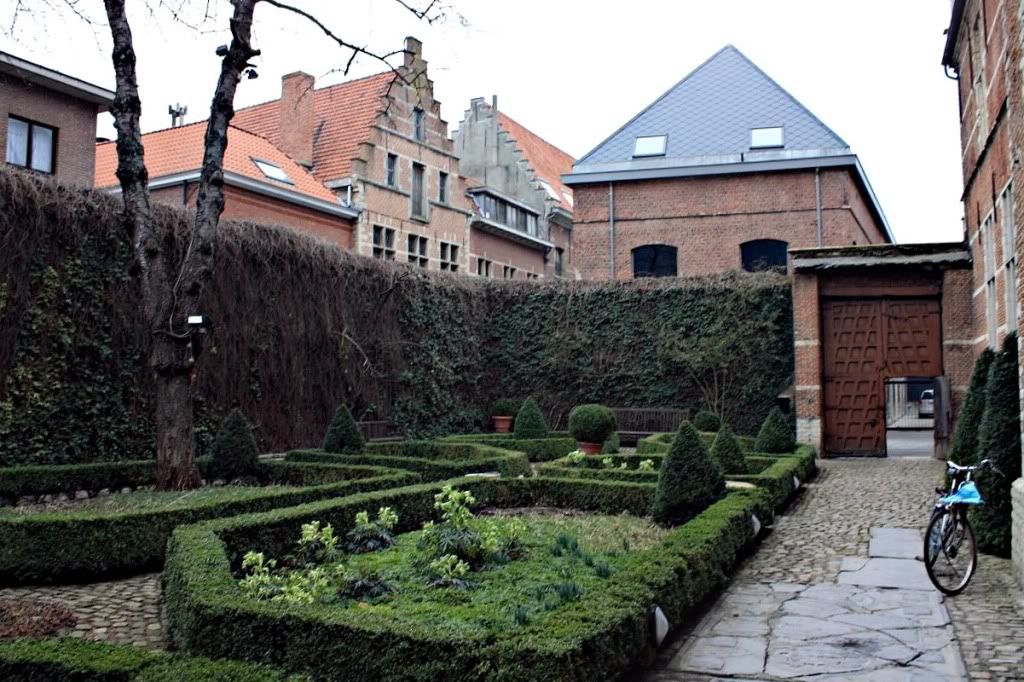











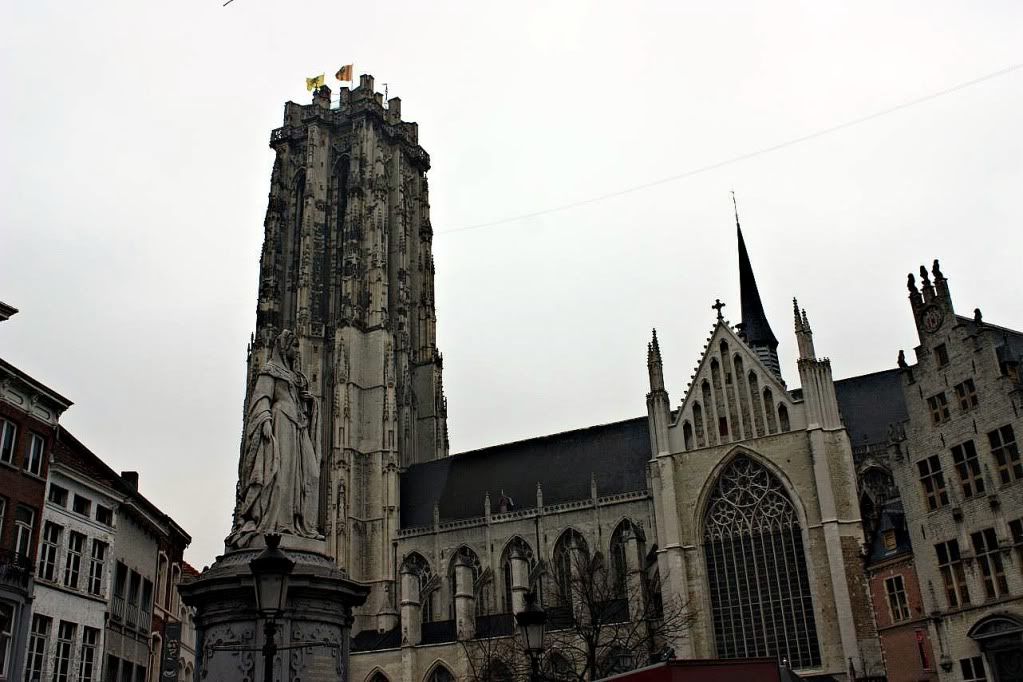
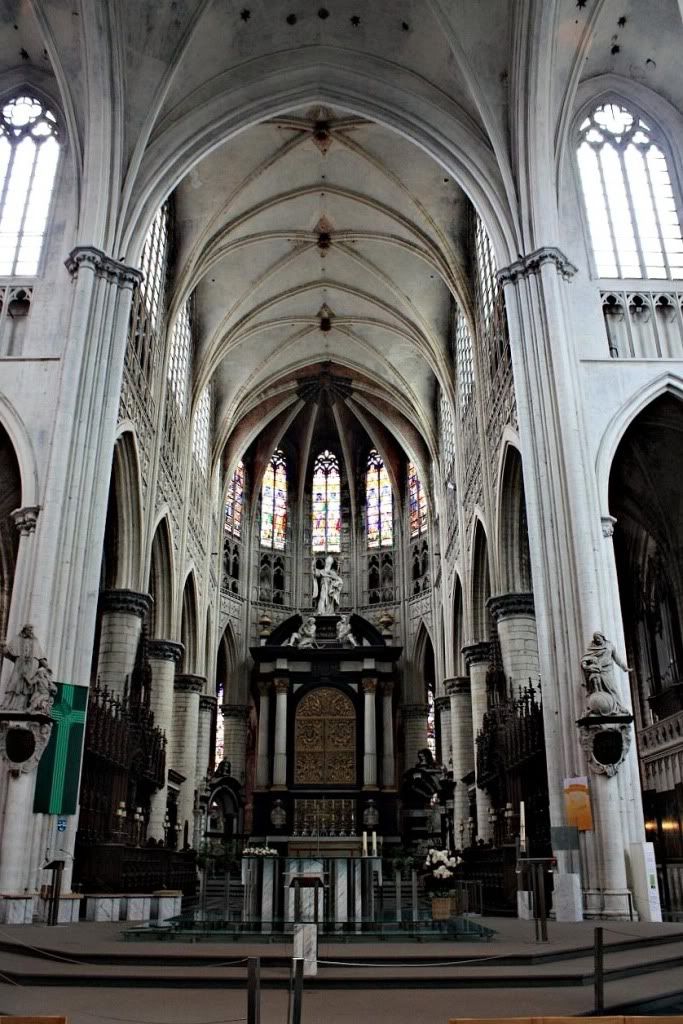

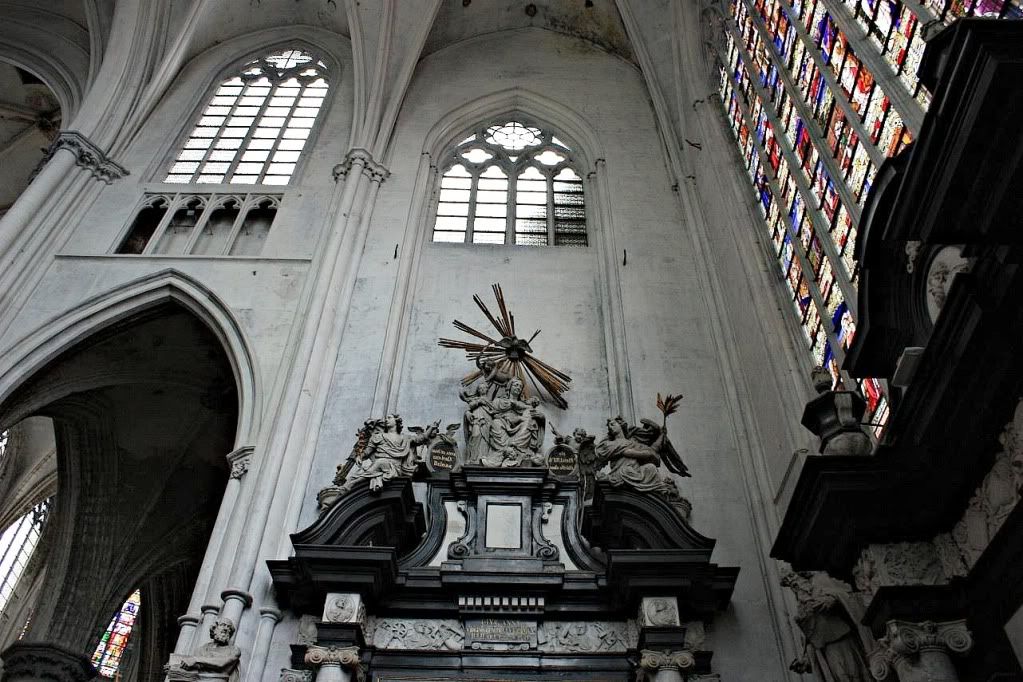
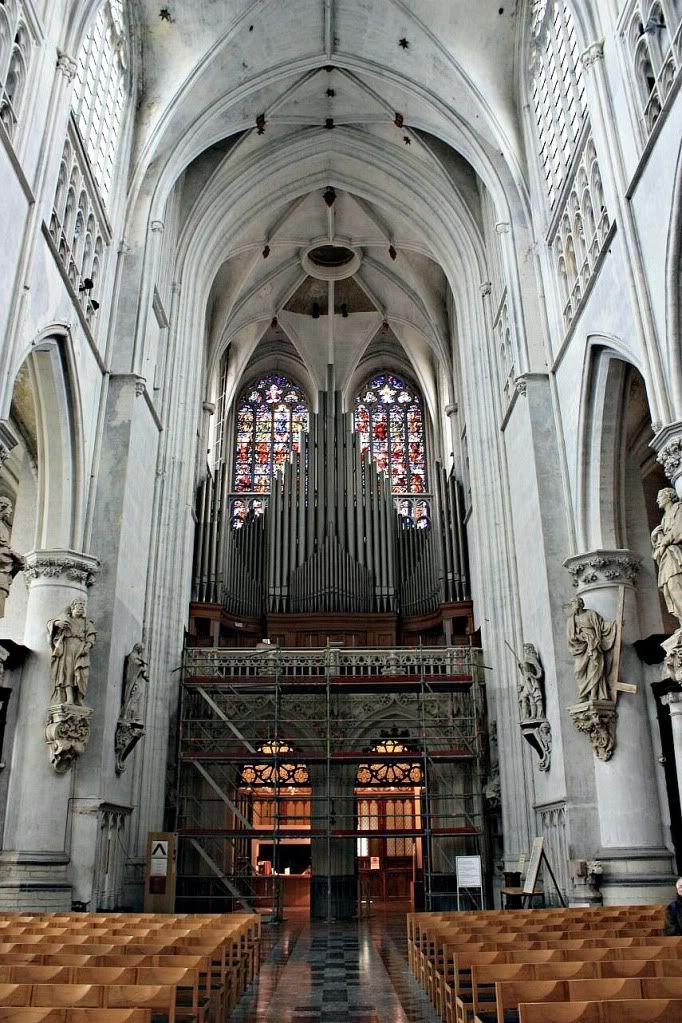
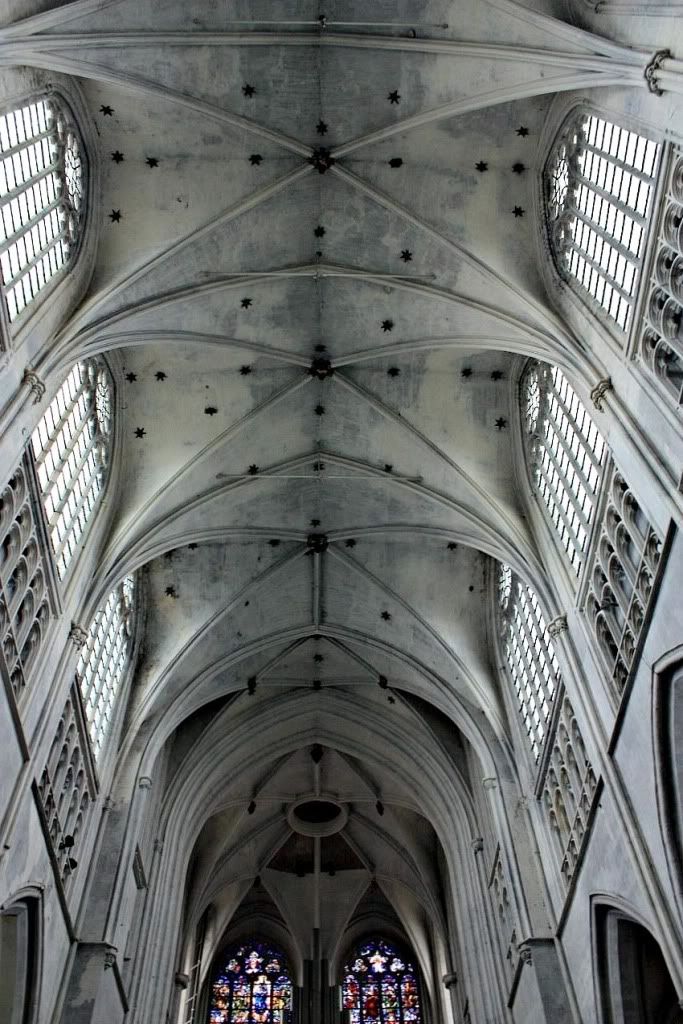
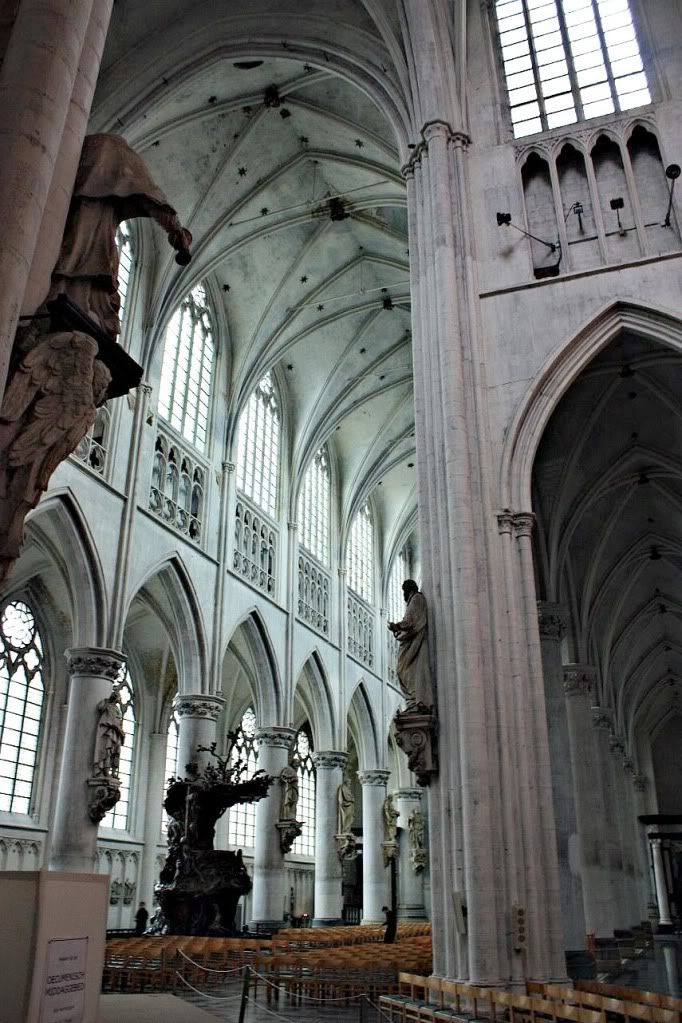
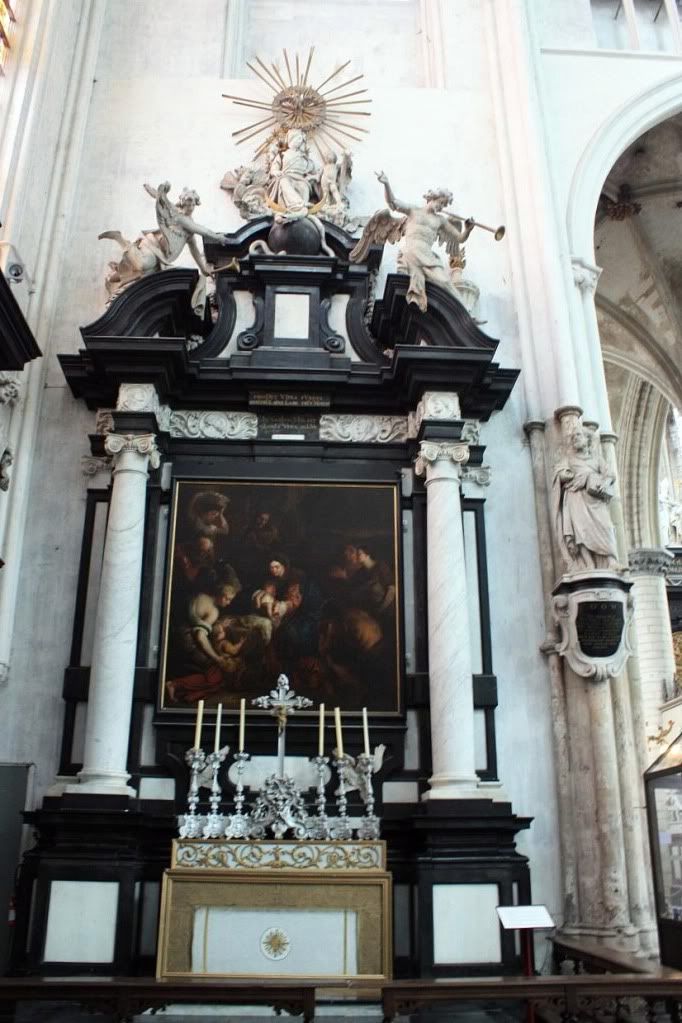
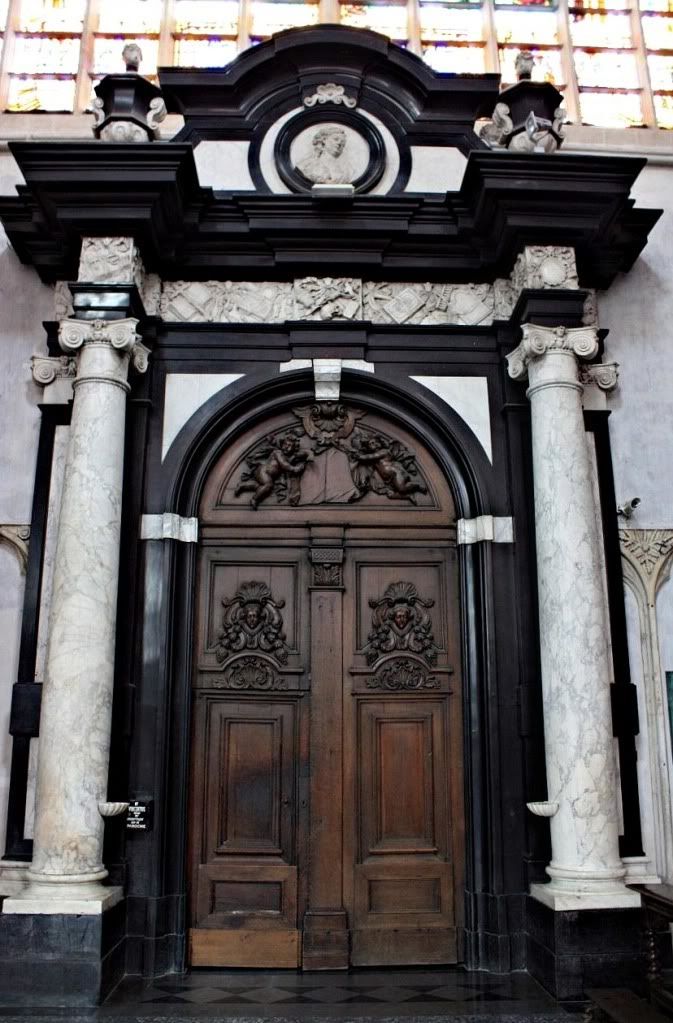
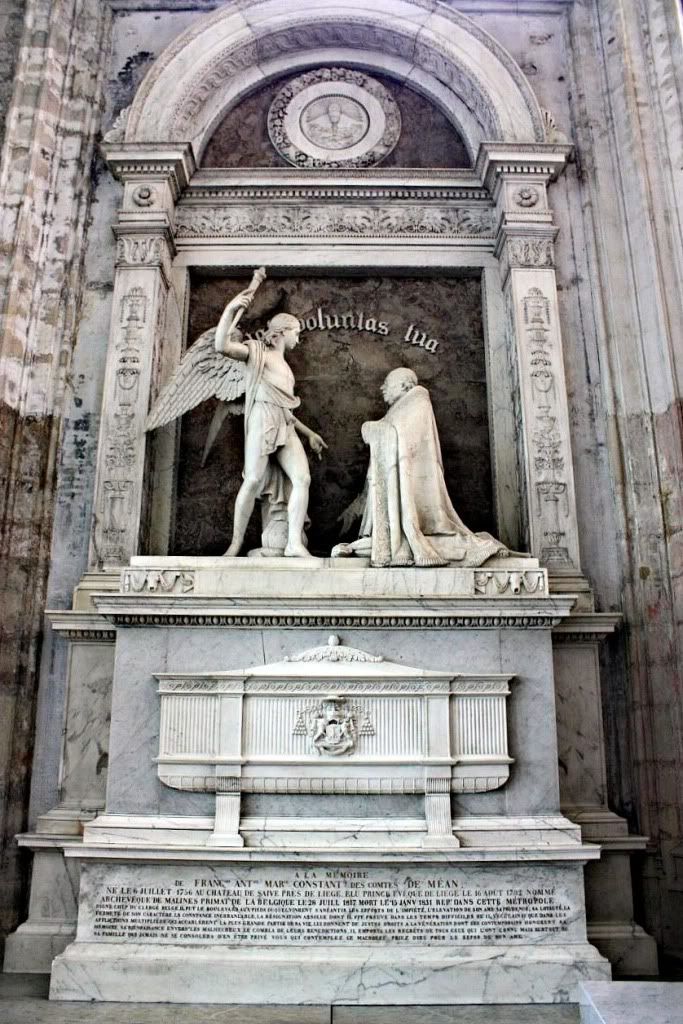
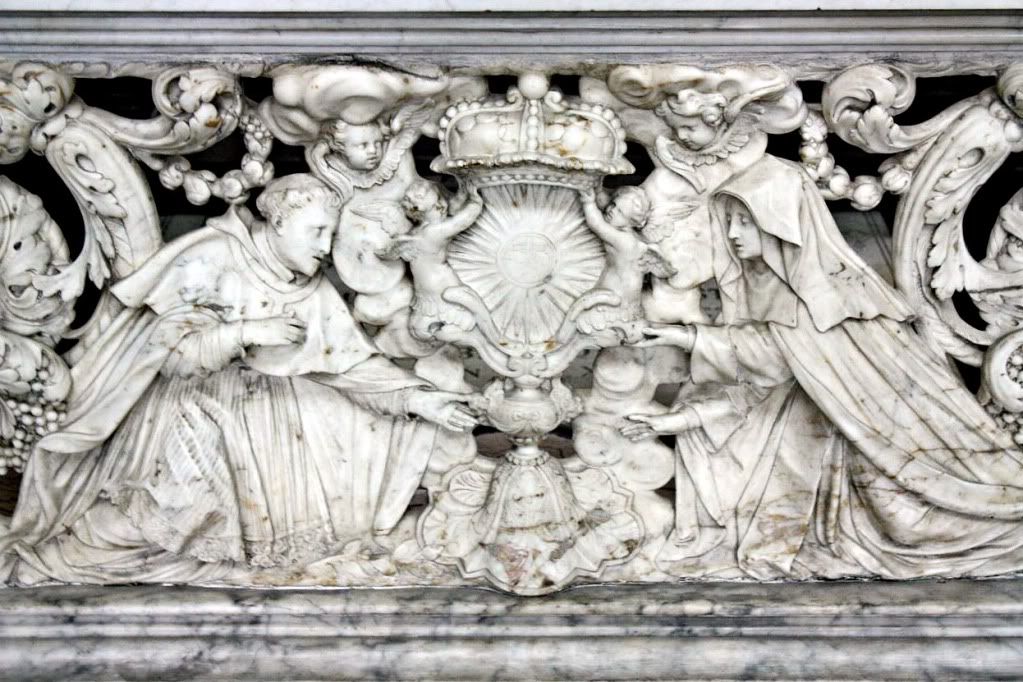
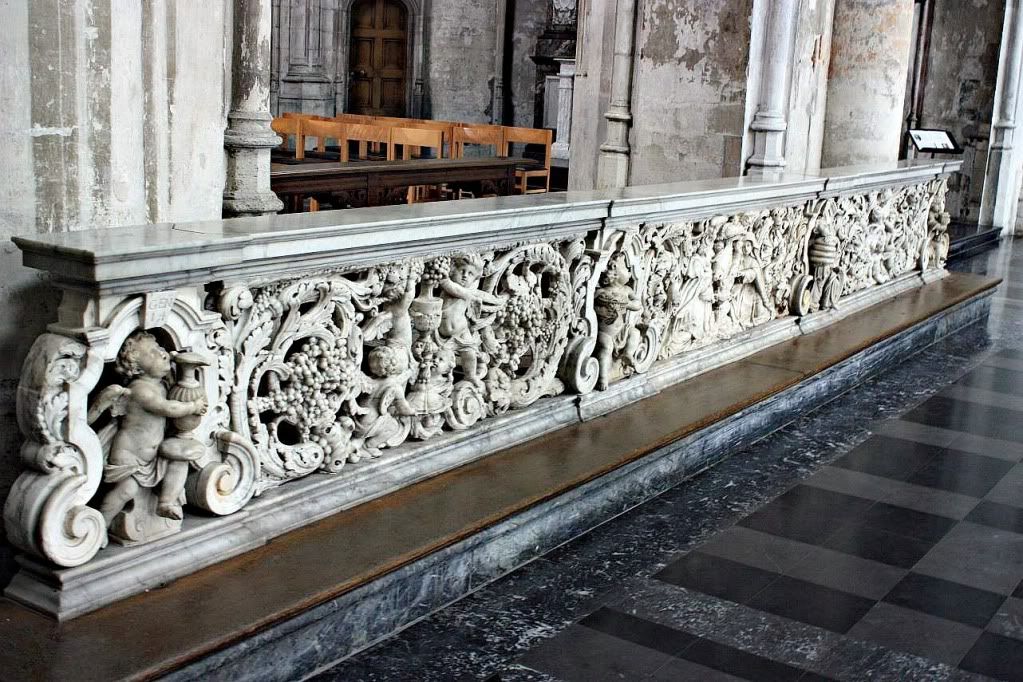

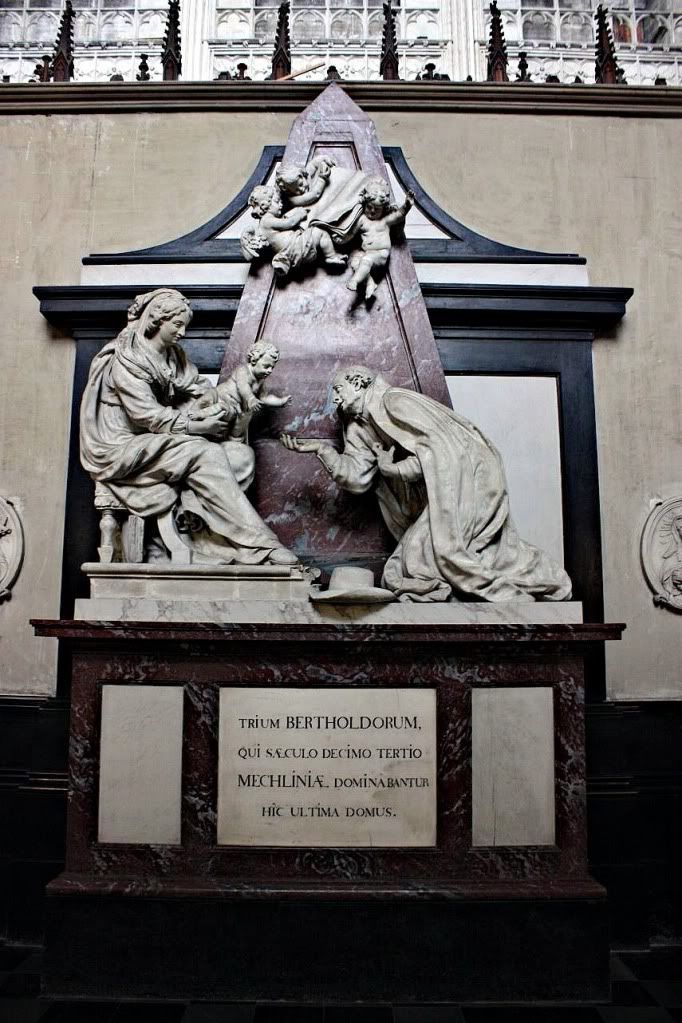
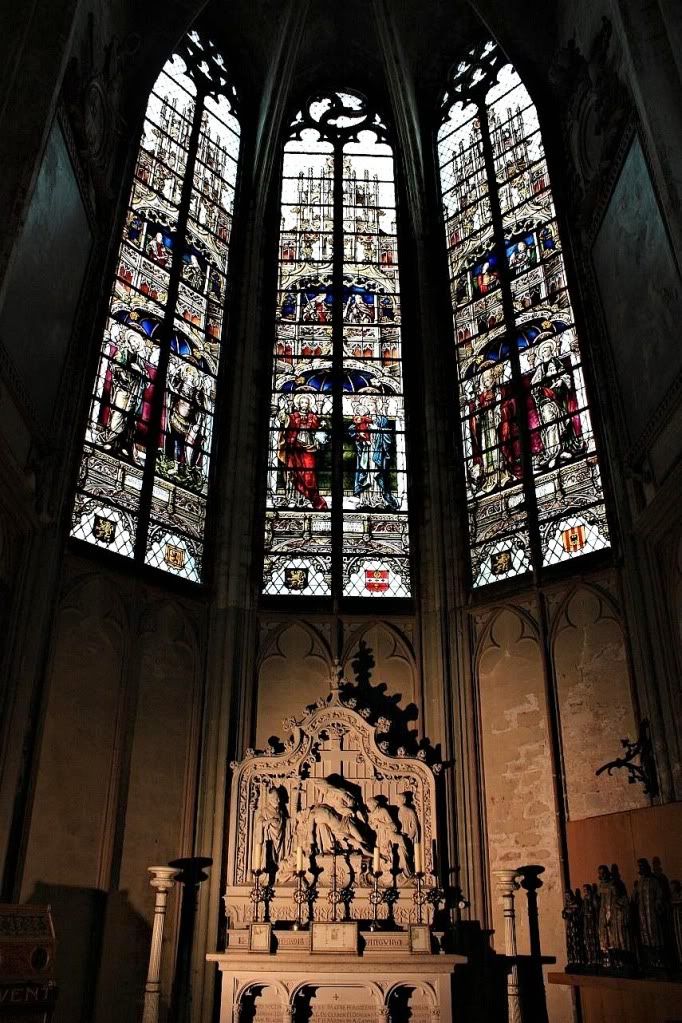




0 comments:
Post a Comment